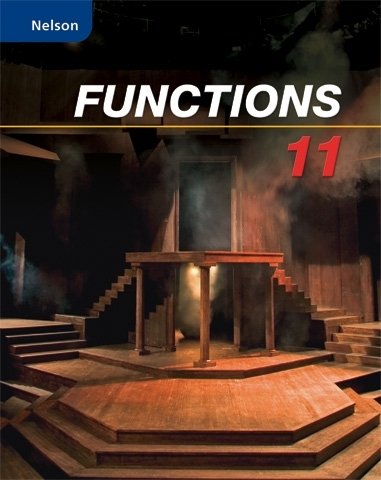
All Solutions
Page 503: Practice Questions
For simple interest with initial amount P, annual rate of $r$, the future amount after $t$ years denoted by $A$ is
$A=P(1+rt)$
The interest is
$I=A-P=Prt$
a.) $P=5400$ , $r=0.067$ , $t=15$
The future amount is
$A=P(1+rt)$
$A=5400[1+0.067(15)]=$10827.00$
The interest earned is
$$
I=A-P=10827-5400=$5427
$$
The future amount is
$A=P(1+rt)$
$A=400left[1+0.096left(dfrac{16}{12}right)right]=$451.20$
The interest earned is
$$
I=A-P=451.2-400=$51.2
$$
The future amount is
$A=P(1+rt)$
$A=15000left[1+0.143left(dfrac{80}{52}right)right]=$18300$
The interest earned is
$$
I=A-P=18300-15000=$3300.00
$$
The future amount is
$A=P(1+rt)$
$A=2500left[1+0.271left(dfrac{150}{365}right)right]=$2778.42$
The interest earned is
$$
I=A-P=2778.42-2500=$278.42
$$
b.) $A=$451.20$ ; $I=$51.20$
c.) $A=$18,300$ , $I=$3300$
d.) $A=$2778.42$, $I=$278.42$
For simple interest with initial amount P, annual rate of $r$, the future amount after $t$ years denoted by $A$ is
$A=P(1+rt)$
The interest is
$I=A-P=Prt$
Here we need to find how many years will a principal amount of $P=5300$ would earn an interest of $I=1200$ at an annual rate of $r=0.072$.
$I=Prtimplies t= dfrac{I}{Pr}$
$t=dfrac{1200}{(5300)(0.072)}=boxed{bf{3.145; years}}$
Since $0.145times 365=52.925$, it will take around 3 years and 53 days to earn an interest of $$1200$.
For simple interest with initial amount P, annual rate of $r$, the future amount after $t$ years denoted by $A$ is
$A=P(1+rt)$
The interest is
$I=A-P=Prt$
a.) Use the formula $I=A-P$
The interest per month is
$I_m=1079.20-1014.60=$64.60$
b.) For simple interest, interest will be the same every month
$P=A-I_m=1014.60-64.60=$950.00$
c.)
The interest per year is just 12 times the monthly interest
$I =12times I_m=12times 64.60=775.20$
From the formula $I=Prtimplies r=dfrac{I}{Pt}$
The annual interest rate is
$r=dfrac{I}{Pt}=dfrac{775.20}{950}=81.6%/a$
The monthly interest rate is $81.6%/12=6.8%$
For compound interest with initial amount P, annual rate of $r$, and compounded $n$ times per year, the future amount after $t$ years denoted by $A$ is
$A=Pleft(1+dfrac{r}{n}right)^{ncdot t}=P(1+i)^m$
where
$$
n = left{ {begin{array}{c}
{1;{text{for annually}}} \
{2{text{ for semi-annually}}} \
{4{text{ for quarterly}}} \
{12{text{ for monthly}}}
end{array}} right.
$$
$i=r/nimplies$ interest rate per compounding
$m$ = $ntimes t$ =total number of compounding after $t$ years
The interest after $t$ years is
$$
I=A-P
$$
a.) $P=6300$, $i=0.049$ , $m=7$
$A=P(1+i)^m=6300(1+0.049)^7=$8805.80$
$I=A-P=8805.80-6300=$2505.80$
$A=P(1+i)^m=14000(1+0.044)^{21}=$34581.08$
$I=A-P=34581.08-14000=$20581.08$
$A=P(1+i)^m=120,000(1+0.011)^{176}=$822;971.19$
$I=A-P=822;971.19-120;000=$702;971.19$
$A=298(1+0.057)^6=$415.59$
$$
I=415.59-298=$117.59
$$
b.) $A=$34581.08$ , $I=$20581.08$
c.) $A=$822971.19$ , $I=$702971.19$
d.) $A=$415.19$ , $I=$117.59$
For compound interest with initial amount P, annual rate of $r$, and compounded $n$ times per year, the future amount after $t$ years denoted by $A$ is
$A=Pleft(1+dfrac{r}{n}right)^{ncdot t}=P(1+i)^m$
where
$$
n = left{ {begin{array}{c}
{1;{text{for annually}}} \
{2{text{ for semi-annually}}} \
{4{text{ for quarterly}}} \
{12{text{ for monthly}}}
end{array}} right.
$$
$i=r/nimplies$ interest rate per compounding
$m$ = $ntimes t$ =total number of compounding after $t$ years
The interest after $t$ years is
$$
I=A-P
$$
We need to find how long it takes for an initial amount of $P=15000$ to reach $A=34000$ at a monthly interest rate of $i=0.006$.
$A=P(1+i)^m$
$34000=15000(1+0.006)^m$
$1.006^m=2.26667$
We shall solve this graphically.
$$
m=dfrac{log(2.26667)}{log(1.006)}=136.794
$$
For compound interest with initial amount P, annual rate of $r$, and compounded $n$ times per year, the future amount after $t$ years denoted by $A$ is
$A=Pleft(1+dfrac{r}{n}right)^{ncdot t}=P(1+i)^m$
where
$$
n = left{ {begin{array}{c}
{1;{text{for annually}}} \
{2{text{ for semi-annually}}} \
{4{text{ for quarterly}}} \
{12{text{ for monthly}}}
end{array}} right.
$$
$i=r/nimplies$ interest rate per compounding
$m$ = $ntimes t$ =total number of compounding after $t$ years
The interest after $t$ years is
$$
I=A-P
$$
In this case, $P=1612$, $A=2112$ , $m=3$ and we shall find $i$
$A=P(1+i)^mimplies (1+i)^m=dfrac{A}{P}$
$i=left(dfrac{A}{P}right)^{1/m}-1=left(dfrac{2112}{1612}right)^{1/3}-1=0.09423$
Since this is compounded semi-annually, $(n=2)$,
$i=r/nimplies r=icdot n$
$$
r=0.09423cdot 2= 0.18845=18.85%/a
$$
18.85%/a
$$
For compound interest with initial amount P, annual rate of $r$, and compounded $n$ times per year, the future amount after $t$ years denoted by $A$ is
$A=Pleft(1+dfrac{r}{n}right)^{ncdot t}=P(1+i)^m$
where
$$
n = left{ {begin{array}{c}
{1;{text{for annually}}} \
{2{text{ for semi-annually}}} \
{4{text{ for quarterly}}} \
{12{text{ for monthly}}}
end{array}} right.
$$
$i=r/nimplies$ interest rate per compounding
$m$ = $ntimes t$ =total number of compounding after $t$ years
The interest after $t$ years is
$$
I=A-P
$$
In this case, $A=25000$, $i=0.023$ , $m=100$ and we shall find $P$
$A=P(1+i)^mimplies P=dfrac{A}{(1+i)^m}$
$$
P=dfrac{25000}{(1+0.023)^{100}}=$2572.63
$$
$2572.63
$$
For compound interest with initial amount P, annual rate of $r$, and compounded $n$ times per year, the future amount after $t$ years denoted by $A$ is
$A=Pleft(1+dfrac{r}{n}right)^{ncdot t}=P(1+i)^m$
where
$$
n = left{ {begin{array}{c}
{1;{text{for annually}}} \
{2{text{ for semi-annually}}} \
{4{text{ for quarterly}}} \
{12{text{ for monthly}}}
end{array}} right.
$$
$i=r/nimplies$ interest rate per compounding
$m$ = $ntimes t$ =total number of compounding after $t$ years
The interest after $t$ years is
$$
I=A-P
$$
In this case, $A=39382.78$, $i=0.037$ , $m=130$ and we shall find $P$
$A=P(1+i)^mimplies P=dfrac{A}{(1+i)^m}$
$$
P=dfrac{39382.78}{(1+0.037)^{130}}=$350.00
$$
$350
$$
For compound interest with initial amount P, annual rate of $r$, and compounded $n$ times per year, the future amount after $t$ years denoted by $A$ is
$A=Pleft(1+dfrac{r}{n}right)^{ncdot t}=P(1+i)^m$
where
$$
n = left{ {begin{array}{c}
{1;{text{for annually}}} \
{2{text{ for semi-annually}}} \
{4{text{ for quarterly}}} \
{12{text{ for monthly}}}
end{array}} right.
$$
$i=r/nimplies$ interest rate per compounding
$m$ = $ntimes t$ =total number of compounding after $t$ years
The interest after $t$ years is
$$
I=A-P
$$
a.) In this case, we shall calculate the interest rate
$A=P(1+i)^m$
$9125.56=8715.91(1+i)^{1}implies i=dfrac{9125.56}{8715.91}-1$
$i=0.047$
From $i=r/nimplies r=icdot n$
Since it is compounded semi-annually, $n=2$
$$
r=0.047cdot 2=0.094=9.4%
$$
$$
P=dfrac{A}{left(1+iright)^1}=dfrac{8715.91}{1+0.047}=$8324.65
$$
b.) $$8324.65$

